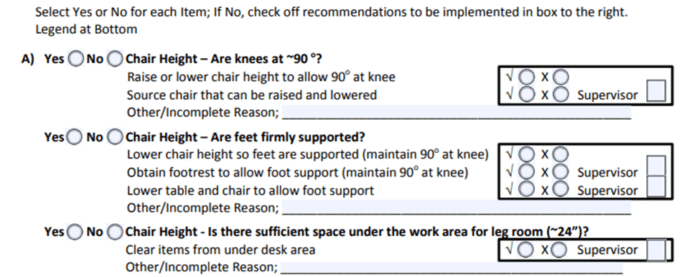Computer based work is typically categorized as low risk in terms of work-related injuries or illness. That being said, repetitive strain injuries are an example of an injury more commonly attributed to this kind of work. This risk of repetitive strain injures becomes even higher when computer work is performed in an awkward body position for prolonged periods. You can help prevent these injuries by utilizing basic ergonomic tools. As an employer, you can provide employees with something as simple as ergonomic self-assessment worksheets for posture and body position, or as complex as professional assessments and specialized equipment.
What about employees who work from home?
We know that fully remote and hybrid work arrangements are becoming more prevalent. As a result, it can be hard to determine who is responsible for maintaining a healthy work environment and how much say an employer may be allowed regarding an employee’s home office.
- Revisiting basic occupational health and safety guidelines can be a good place to start.
- The occupational health and safety legislation for a given province can help guide conversations and expectations around employees work spaces.
- The Canadian Centre for Occupational Health & Safety (CCOHS) also provides guidelines for your responsibilities as an employer, and how to read legislation – click here for an overview of their fact sheets.
Do I have to provide ergonomic tools to employees?
Let’s consider Ontario’s Occupational Health and Safety Act (OHSA), as an example. Under this legislation, an employer has the duty to provide and maintain a safe working environment. As such, the same employer obligations apply whether the working environment is in an office space, or an employee’s home.
The decision whether or not employees are provided with ergonomic equipment is up to you as the employer. However, it is in the best interest for both you and your employees to meet basic ergonomic guidelines. Your first step can be as simple as providing your employees with an ergonomic self assessment worksheet – example shown below:

When in doubt, reach out to a Human Resource (HR) professional or partner with an occupational health and safety (OH&S) specialist.


